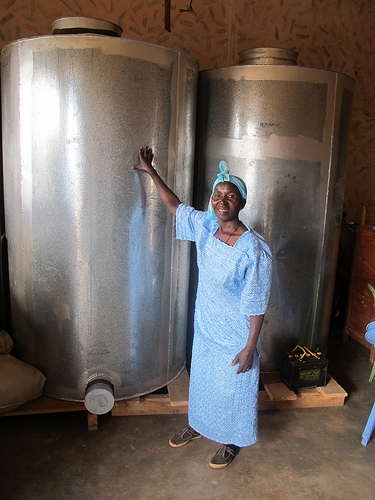 A funding scheme introduced ten years ago to assist farmers buy metal silos for storing grains and insulating them from weevil and other pest attacks has recorded fanatical uptake with over 90 percent of farmers introduced to the programme having already secured their own silos.
A funding scheme introduced ten years ago to assist farmers buy metal silos for storing grains and insulating them from weevil and other pest attacks has recorded fanatical uptake with over 90 percent of farmers introduced to the programme having already secured their own silos.
Traditional cribs and gunny bags, the most common storage facilities, cannot guarantee protection against the larger grain borer that causes over 30 per cent of the losses, sometimes wiping out entire harvests during severe infestations. They are not even effective against the common weevil that accounts for 10-20 per cent of post harvest losses in the area.
But airtight metal silos minimise oxygen inside, killing any weevils or pests. They also prevent insects from entering the grains from outside.
After the grains have been harvested, they are usually laid out in the sun to dry before the actual storage begins. A farmer then confirms that the grains are completely dry before storing them in the metal silos.
“There is a simple method of checking this moisture content using a soda bottle,” Douglas Muema, a farmer, explained. “Just put a few grains in the bottle together with a fair amount of salt. Mix the contents of the bottle thoroughly for a few minutes and leave for a while.
If the salt particles are left sticking on the glass walls, it shows that they’ve absorbed some moisture from the grains. This is an indication that the grains are not yet dry, so further drying is required. If the salt particles do not stick to the glass walls, it’s an indication that the grains are now ready for storage in the metal silos.”
After the grains have been put into the metal silo, the container cover is placed tightly onto the silo’s top then sealed with rubber tubing. This ensures the silo will remain airtight for years to come and that no pests or insects can get into the container.
The Metal Silo Promotion Project, first trialed in Machakos district, has also halved the aflatoxin menace, which had become common in Eastern province.
However, while the metal silo has emerged as a simple and effective grain storage technology, cost had locked out many farmers from turning to the silos, despite their need. The initial cost of a silo varies according to capacity from Sh3,000 for a one-bag capacity silo to Sh17,000 for a 20-bag sile. For farmers also grappling with high seed and fertilizer prices, this investment ahs often been out of reach.
But the Catholic Relief Services, an organisation that has been overseeing the silo project, has now set up a revolving fund offering loans to farmers to invest in the silos. The revolving fund is designed so that a farmer only raises a 40 per cent down payment to qualify for a 60 per cent loan.
“I have suffered hugely due to the post-harvest losses. The maize that was once my lifeline once got destroyed by pests, since I overharvested and didn’t want to sell it at that particular time. The aflatoxin menace of 2011 also affected me greatly. Doctors told me one of my sons got some mental problem because of taking maize that had not been fully dried. I don’t know how I survived,” said Getrude Mwikali. She is among the farmers now actively involved in the revolving fund to buy the silos.
“I have used the silos for several years now, and I am convinced that this is the best method to store grain,” said Fanuel Mwende, another farmer. “With other storage methods, we would lose up to 90 per cent of our stored grain—now we lose nothing.” Schools have also been early adopters of the metal silos, because many grow and store grain year-long to feed their students.
















Comments powered by CComment